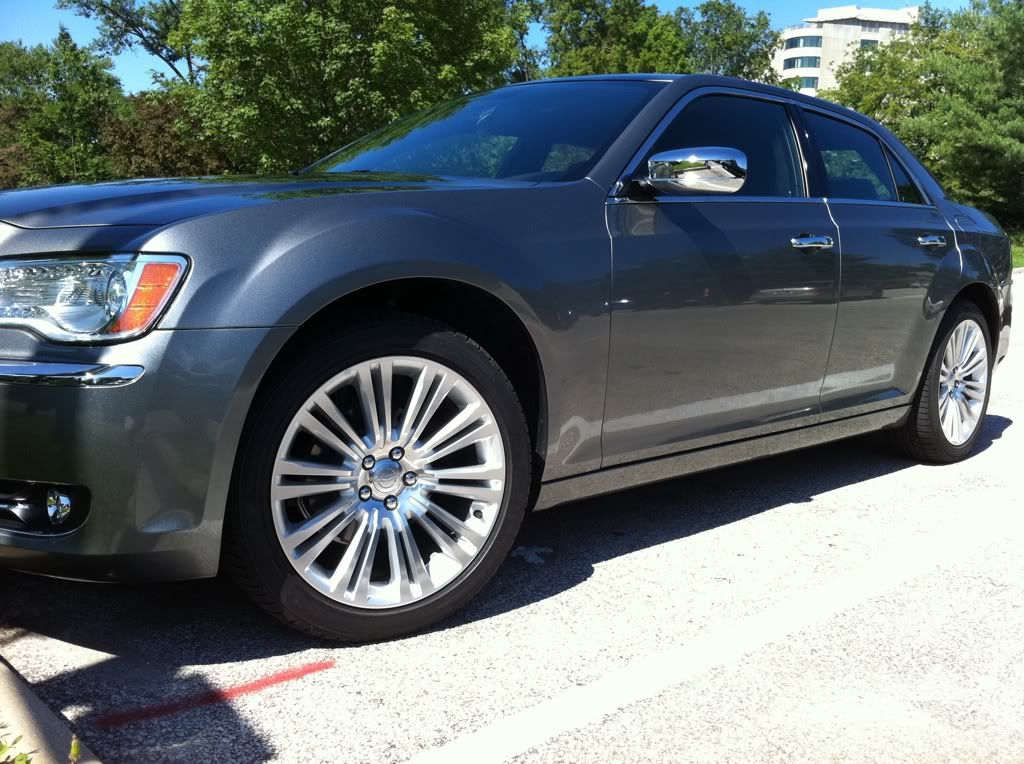crcfl
New member
- Jun 26, 2011
- 18
- 0
So, yesterday I put a coat of wax on my car. The car is new, has a couple hundred miles on it and doing the baggie test didn't seem like it needed a clay treatment (I will be doing this in the future though and this weekend with my wife's car).
I used Megs Ultimate Liquid Wax after washing with Megs Gold Class and was initially happy with the results:

However, later that evening as the sun went down I noticed what I think is streaking. Here are a couple pics:


All and all not a huge deal but the ones on the hood annoyed me. I am sure this is user error. I did apply a thin coat in the shade of my garage. I went back a second time and did a quick pass to make sure I got ample coverage. I used a microfiber cloth to buff it and went over the entire car again with another microfiber cloth as a final swipe as described on AutoGeek. (The tips here are amazing, by the way).
This morning, I noticed that the swirls from the application of the paint were very noticeable with the condensation on my car:


Now that the condensation is gone you can't see them though.
Any insights on what I can do to improve will be great. I did read in the Megs UW thread that some people have experienced problems with streaking - don't know if this is the case. Honestly, I am sure it is more user error. In all I thought the product was easy to work with and wipe off. I should note this is all hand applied, however, in learning more and more about detailing I can see becoming completely OCD about detailing and using a machine in the future. :xyxthumbs:
I am picking up Duragloss 901 soon to wash the car each week and will be putting in an order with Autoweek today for many other products I have read about (including Collitate 845 wax, pinnacle clay bar, ONR, microfibers towels, etc. for the future.). Just didn't know if there was a better wax to work with or if using a QD would help with any of the streaking.
Thanks in advance for your time and insights.
Best,
Chad
I used Megs Ultimate Liquid Wax after washing with Megs Gold Class and was initially happy with the results:

However, later that evening as the sun went down I noticed what I think is streaking. Here are a couple pics:


All and all not a huge deal but the ones on the hood annoyed me. I am sure this is user error. I did apply a thin coat in the shade of my garage. I went back a second time and did a quick pass to make sure I got ample coverage. I used a microfiber cloth to buff it and went over the entire car again with another microfiber cloth as a final swipe as described on AutoGeek. (The tips here are amazing, by the way).
This morning, I noticed that the swirls from the application of the paint were very noticeable with the condensation on my car:


Now that the condensation is gone you can't see them though.
Any insights on what I can do to improve will be great. I did read in the Megs UW thread that some people have experienced problems with streaking - don't know if this is the case. Honestly, I am sure it is more user error. In all I thought the product was easy to work with and wipe off. I should note this is all hand applied, however, in learning more and more about detailing I can see becoming completely OCD about detailing and using a machine in the future. :xyxthumbs:
I am picking up Duragloss 901 soon to wash the car each week and will be putting in an order with Autoweek today for many other products I have read about (including Collitate 845 wax, pinnacle clay bar, ONR, microfibers towels, etc. for the future.). Just didn't know if there was a better wax to work with or if using a QD would help with any of the streaking.
Thanks in advance for your time and insights.
Best,
Chad
